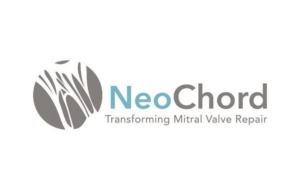 NeoChord recently announced positive results from a clinical study of its transcatheter NeXuS system for mitral chordal repair.
NeoChord recently announced positive results from a clinical study of its transcatheter NeXuS system for mitral chordal repair.
The company’s global early feasibility study treated patients with the transcatheter NeXuS system and results at one-year follow-up demonstrated notable clinical benefit and patient physiological improvement, according to the company.
NeoChord’s study results showed a pre-procedure mitral regurgitation (MR) grade of severe (4+) was reduced to trace and remained unchanged through all follow-up intervals. The results also showed significant improvement in the left ventricular ejection fraction and left atrial dimensions.
“We are pleased to begin reporting on patient outcomes at the 1-year follow-up period. These impressive results build upon our existing body of robust clinical evidence and represent a significant milestone not only for NeoChord, but also for the treatment of mitral regurgitation. Most importantly, the study results validate the efficacy and safety of using the NeXuS System to perform multiple-chord to single anchor procedures and further establishes NeoChord’s leadership position in off-pump, beating heart mitral chordal repair,” President and CEO David Chung said in a news release.
Mitral regurgitation is one of the most common heart valve diseases that affect millions of people around the world. If the condition is left untreated, it could lead to chronic heart failure. Mitral regurgitation is characterized by blood leaking backward within the heart that is caused by ruptured native chords and the mitral valve’s inability to close properly.
NeoChord’s NeXuS transcatheter mitral chordal repair device restores function in patients with primary mitral regurgitation. It maintains the natural physiologic functionality of the mitral valve and is deployed through the vein using a transfemoral delivery catheter that is navigated transeptally to the diseased native mitral valve.
“These are compelling results for the future of minimally invasive transcatheter chordal repair, a procedure poised to drive positive outcomes and patient benefits by maintaining the physiologic construction of the mitral valve,” said Dr. Azeem Latin, section head and director of interventional cardiology and structural heart interventions at Montefiore Medical Center. “This procedure is a promising addition to the mitral toolbox and affords the heart team with an option to provide patients with an interventional approach to a surgically-proven technique.”
